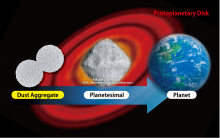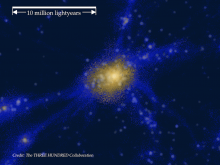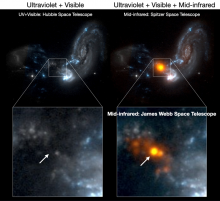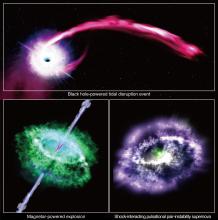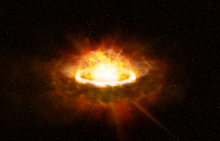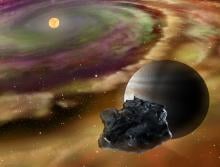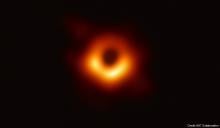The Astrophysical Journal Letters
News
01 Sep 2023
Survey observations with the Subaru Telescope have led to the discovery of 22 quasars in the very distant universe. Their space density indicates the rapid emergence of supermassive black holes soon after the Big Bang, providing strong constraints on models of when, where, and how they formed and grew in cosmic space-time. The results also indicate a small quasar contribution to cosmic reionization, a major phase transition of the early universe.
21 Jul 2023
Current evidence suggests that microparticles of cosmic dust collide and stick together to form larger dust aggregates that may eventually combine and develop into planets. Numerical models that accurately characterize the conditions required for colliding microparticle aggregates to stick together, rather than bounce apart, are therefore paramount to understanding the evolution of planets. Recent modeling suggests that dust aggregates are less likely to stick together after a collision as the size of the aggregates increases.
15 Mar 2023
A team led by Kavli IPMU researchers have found the earliest evidence of parts of the universe that were heated to temperatures more characteristic to the intergalactic gas medium where most atoms reside in the universe today.
01 Mar 2023
An international research team has discovered the first example of a supernova, known as SN 2018ivc, showing an unprecedented rebrightening at millimeter wavelengths about one year after the explosion.
With the help of the Atacama Large Millimeter/submillimeter Array -- or ALMA -- the analysis revealed that the dying massive star ejected a large amount of its envelope due to a strong binary interaction with a companion star that took place about 1500 years before the explosion.
In a paper published in The Astrophysical Journal Letters, the team posits that this rebrightening event in SN 2018ivc provides a missing link between supernovae -- or SN -- that occur in binary star systems and those that involve solitary massive stars.
03 Feb 2023
Researchers used the James Webb Space Telescope to identify the precise location of a powerful energy source hidden by cosmic dust in the luminous merging galaxy IIZw096.
13 Jan 2023
A team including Kavli IPMU has studied the relation between galaxy size and luminosity of some of the earliest galaxies in the universe taken by the James Webb Space Telescope, less than a billion years after the Big Bang.
03 Oct 2022
Supermassive black holes can launch fast-moving plasma, which emit strong radio signals known as radio jets. Despite being discovered over 40 years ago, much remains unknown about how radio jets are produced. Now, a research team, led by Tohoku University astrophysicists, has attempted to clarify how plasma gets loaded into radio jets.
29 Aug 2022
Researchers at Osaka Metropolitan University have observed "baby stars" in the Small Magellanic Cloud, having an environment similar to the early universe. Toward one of the baby stars, they found molecular outflow, which has similar properties to those seen in the Milky Way galaxy, giving a new perspective on the birth of stars.
14 Jul 2022
A team of astronomers including Kavli IPMU discovered a mysterious short-duration astronomical event that was as bright as a superluminous supernova, but evolving much faster, reports a new study.
09 Dec 2021
A team of astronomers including Kavli IPMU's Ji-an Jiang has discovered the fastest optical flash of a Type Ia supernova.
10 Aug 2021
Researchers have developed a novel technique to investigate the dynamics of the early Solar System by analyzing magnetites in meteorites utilizing the wave nature of electrons.
11 Apr 2019
Japanese researchers contribute to paradigm-shifting observations of the gargantuan black hole at the heart of distant galaxy Messier 87.
Events
Sorry, no events coming up for this topic.
Researchers
Sorry, no researchers coming up for this topic.
Giants in history
Sorry, no researchers coming up for this topic.



